Immersing yourself in the world of the sauna is literally a hot adventure for your body. Whether you’re a sauna enthusiast or a novice exploring the realms of relaxation and well-being, understanding the nuances of sauna usage can unlock a myriad of health benefits. This article is your all-access guide to various sauna types, a deep dive into their incredible benefits, expert advice, and a sneak peek at what to anticipate (and what to avoid) in the sauna world. So, let’s jump in and explore what this tiny, wooden room is all about!
Disclaimer: Articles and posts containing medical, financial, or legal content are not to be taken as professional advice or recommendations. All information is provided for general informational purposes only. Accordingly, before taking any actions, and in the event of concerns or conditions regarding such topics, we encourage you to seek consultation with the appropriate professionals (such as doctors, accountants, or lawyers).
What is a Sauna?
Saunas, commonly found in hotels, cruise ships, gyms, day spas, and private homes, are sanctuaries of heat designed to offer relaxation, stress reduction, improved circulation, and potential detoxification through sweating. These small rooms or buildings utilize different heating methods, with traditional dry saunas or infrared saunas.
With a long history, saunas are known for their use in various cultures for relaxation, socializing, and promoting overall well-being. It is believed that saunas originated in Finland and then spread to different parts of the world. While the word “sauna” is Finnish, the practice of using heat for relaxation and health benefits can be found in various forms across many countries throughout history.
Types of Saunas
- Traditional Saunas: These use a heating element to warm the air, keeping the humidity relatively low.
In traditional dry saunas, users can pour water over the hot stones to create steam. This process is known as “löyly” in Finnish sauna culture. Adding water to the sauna stones enhances humidity temporarily, creating a sensation of moist heat. It’s a practice deeply rooted in Finnish sauna traditions, and it’s believed to offer a unique and invigorating experience.
However, it’s important to note that not all saunas permit the pouring of water over the stones, as it depends on the specific design and heating system of the sauna.
Here are some general guidelines:
Allowed Saunas: In saunas where it’s allowed, there might be a ladle or bucket provided for users to pour water over the stones. This practice is usually encouraged, and it adds a dimension of steam and increased humidity to the sauna session.
Saunas with Restrictions: In some saunas, especially those with electric heaters, pouring water directly over the heating elements may not be recommended. Always follow the guidelines provided by the sauna facility or the manufacturer of the sauna equipment. If unsure, it’s best to ask the facility staff or sauna owner. - Infrared Saunas: Instead of heating the air, infrared saunas use infrared heaters to heat the body directly. These saunas operate at lower temperatures than traditional saunas and are often perceived as more comfortable by some users. Infrared saunas typically don’t involve the practice of pouring water over stones. Check the guidelines specific to your infrared sauna.

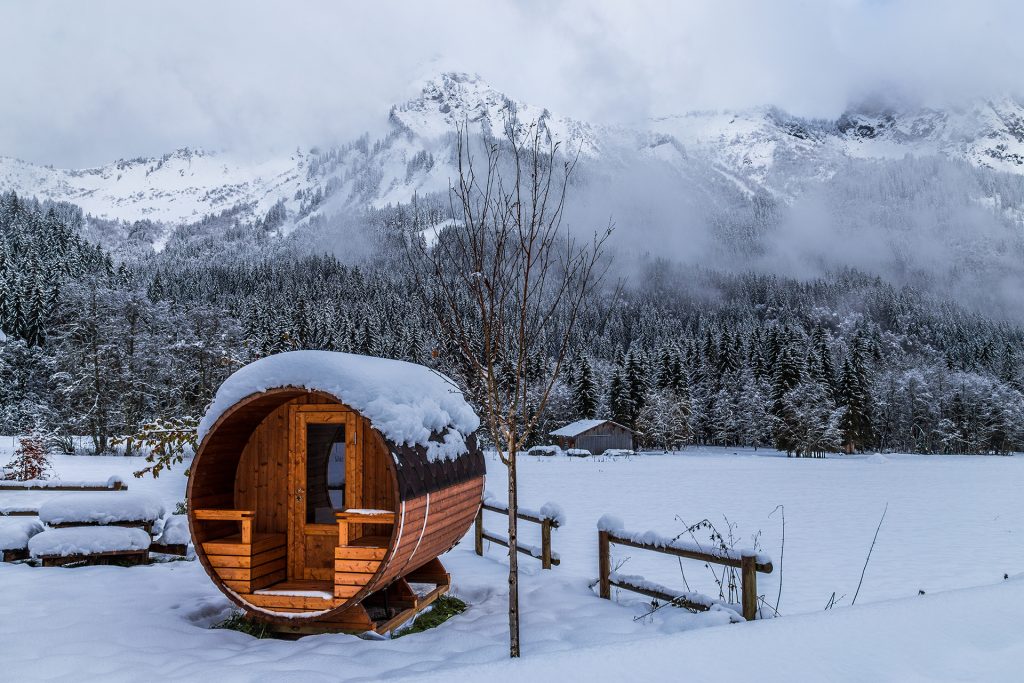

Important Considerations
Before delving deeper, it’s crucial to understand that personal preferences, comfort levels, health conditions, and the type of sauna play pivotal roles. Always keep these key considerations in mind:
Stay Hydrated: Drink plenty of water before and after sauna sessions to stay hydrated.
Listen to Your Body: If you feel dizzy, lightheaded, or uncomfortable, exit the sauna immediately. If lying down, sit up straight for a minute before exiting to restore normal circulation.
Individual Variations: Some people may tolerate longer or more frequent sessions, while others may need shorter or less frequent exposure. Individual responses to sauna use can vary.
Healthcare Consultation: Individuals with pre-existing conditions, pregnant women, and those with cardiovascular issues should consult a professional before adding sauna sessions to their routine.
Benefits of Sauna
Saunas offer a plethora of physical and mental health benefits, making them increasingly popular. Here’s an exploration of their potential impacts:
- Relaxation and Stress Reduction: Saunas are renowned for their ability to induce relaxation and alleviate stress. The heat soothes muscles, releases tension, and fosters a sense of calm, contributing significantly to mental well-being.
- Improved Circulation: The heat in saunas can dilate blood vessels, resulting in increased blood flow. This enhanced circulation may contribute to better cardiovascular health and aid in muscle recovery.
- Detoxification: Sauna sessions, involving sweating, help the body eliminate toxins through the skin. Some believe this process supports the body’s natural detoxification mechanisms.
- Skin Health: Saunas may positively impact the skin by promoting improved circulation and helping cleanse pores through sweating. Regular sauna use is associated with a healthier complexion.
- Pain Relief: Saunas provide relief from muscle and joint pain, offering comfort for conditions such as arthritis or muscle soreness. Additionally, sauna use may expedite recovery after intense physical activity.
- Immune System Support: Regular sauna visits are believed to reduce susceptibility to colds and flu, as well as relieve chronic respiratory ailments like hay fever, asthma, and bronchitis.
- Improved Sleep: Evening sauna sessions positively affect both sleep quality and duration. The calming effect of saunas in the early hours of the night relaxes muscles, resulting in less movement during sleep and an increase in the quality of slow-wave sleep.
- Potential Cardiovascular Benefits: Studies suggest that regular sauna use may be linked to cardiovascular benefits, including a reduced risk of heart-related conditions and regulation of high blood pressure. However, individual responses to sauna use can vary.
- Mental Health: Saunas induce relaxation, potentially reducing symptoms of anxiety and depression. The meditative quality of sauna sessions contributes to a sense of mental clarity.
- Social Interaction: Saunas, located in communal settings like gyms or spa facilities, provide a space for socializing and connecting with others. This social aspect contributes to a sense of community and overall well-being.
How to use the sauna:
Questions asked and answered.
What Happens to Your Body Temperature in a Sauna?
Entering a sauna is like stepping into a heat adventure for your body! Once you’re in, your skin temperature starts to rise as the cozy heat wraps around you. To keep things cool, your body kicks in with some cool-down tactics. Blood vessels near your skin open up (fancy term: vasodilation), letting more blood flow near the surface. That might give you a rosy glow – it’s just your body’s way of saying, “I’m adjusting to the heat!” But here’s the important part: you start sweating. The sweat shows up, and when it evaporates, it’s like your body’s own natural air conditioning. So, in the sauna, it’s a balancing act between feeling warm and staying cool. Your body’s way of making sure you have an enjoyable heat experience.
What is the Typical Temperature in a Sauna?
Sauna temperatures vary, and the optimal temperature depends on personal preference and sauna type:
- Traditional Dry Sauna (Finnish Sauna): Typically, temperatures range between 160°F to 195°F (71°C to 90°C). Many people prefer temperatures around 170°F (77°C), but some may enjoy hotter saunas up to 200°F (93°C).
- Infrared Sauna: Infrared saunas operate at lower temperatures compared to traditional saunas. Temperatures usually range between 120°F to 150°F (49°C to 66°C). The lower temperature is compensated by the direct heat penetrating the body more effectively.
Beginners might start with lower temperatures and shorter sauna sessions and gradually increase as they become accustomed to the heat. In a traditional sauna, the temperature can vary depending on your location within the space. Heat tends to rise, so for those who prefer a milder heat experience, sitting on the lower benches could be more comfortable. Conversely, if you enjoy the intense heat, you might opt for a higher bench. Experimenting with different bench levels allows individuals to find their preferred spot based on personal comfort and how they respond to the heat distribution within the sauna. Additionally, staying hydrated and paying attention to how your body responds is crucial for a safe and enjoyable sauna experience.
How Often Should You Visit the Sauna?
- Regular Use: Enjoying a sauna 1 to 3 times per week is considered beneficial for many, allowing for potential health benefits.
- Consistency is Key: Regular, moderate use is often more beneficial than infrequent, intense sessions.
- Listen to Your Body: Pay attention to how your body responds. Reduce frequency or duration if discomfort arises.
- Individual Variations: Factors like age, health status, and tolerance influence sauna use frequency.
- Hydration and Recovery: Stay hydrated, and allow time between sessions for recovery.
- Consult with a Professional: Seek guidance from healthcare professionals if you have underlying health conditions or concerns.
What is the Recommended Number of Sessions Per Visit and Duration per Session?
Recommended Frequency:
Regular sauna use may typically include 2 to 3 sessions per visit. Sauna enthusiasts may do more sessions in a longer overall visit to a day spa for example. When I visit Germany and spend a whole day (like 8-10 hours] at a sauna retreat I might do 5 or 6 sessions in different saunas with different temperatures. I typically do the hotter ones first and move to more moderate temperatures over the day. You should adjust based on personal response.
Duration per Session:
Traditional Dry Sauna (Finnish Sauna): A typical session lasts between 12 to 20 minutes. Some individuals may prefer shorter sessions, especially if they are new to sauna use. It’s crucial to pay attention to your body’s signals and exit the sauna if you start feeling uncomfortable or lightheaded. If you lay down during a sauna session, make sure to sit up straight for a minute or two before leaving the sauna room, so your body circulation can go back to normal. I have seen many people faint because they got up too fast from a lying position. Also don’t worry if you can only withstand the heat for a few minutes. For some people, it takes time to build up tolerance. Just keep trying.
Infrared Sauna: Sessions in an infrared sauna are often slightly longer, ranging from 20 to 30 minutes. Infrared saunas operate at lower temperatures, allowing for extended exposure.
What are the Most Useful Tips for Relaxation in the Sauna?
Creating a relaxing experience in a sauna involves considering several key aspects to ensure a comfortable and enjoyable environment. Here are the most important factors for achieving relaxation in a sauna:
- Appropriate Temperature: Maintaining a comfortable temperature is crucial. The sauna should be warm enough to induce relaxation, typically between 160°F to 195°F (71°C to 90°C) for traditional saunas.
- Proper Hydration: Staying hydrated is vital for a relaxing sauna experience.
- Comfortable Seating: The design and arrangement of benches or seats in the sauna should be comfortable. Choose a seating or lying position that suits your preference and allows you to relax fully.
- Sauna Lighting and Atmosphere (this might only be possible to influence in a private sauna): Soft, subdued lighting can create a calming atmosphere. Some people enjoy the therapeutic effects of chromotherapy (color therapy), where different colors are used to enhance relaxation.
- Clean and Well-Maintained Environment: A clean and well-maintained sauna promotes relaxation. Regular cleaning and maintenance ensure a pleasant atmosphere and contribute to a positive overall experience. You can help maintain healthy hygiene in the sauna by using a large towel to cover the benches before sitting or lying down. And foremost it helps keep you healthy.
- Proper Ventilation: Good ventilation helps maintain air quality inside the sauna. Sometimes, in my gym, I open the door for a few minutes and let some fresh air into the sauna room. Yet it is always important to consider others and I typically ask, if other people are around.
- Soothing Music or Silence: Some individuals prefer the tranquility of silence, while others find soft, soothing music conducive to relaxation. Choose an option that aligns with your personal preference.
- Respectful Behavior: Creating a relaxing environment also involves respecting the quiet and contemplative atmosphere of the sauna. Keep conversations at a low volume and be mindful of others seeking a peaceful experience.
- Mindfulness and Meditation: Use the sauna as a space for mindfulness and meditation. Focus on your breath, and allow yourself to be present in the moment, fostering a deeper sense of relaxation.
- Know Your Limits: Pay attention to your body’s signals and know your limits. If you start feeling uncomfortable or lightheaded, exit the sauna promptly. Relaxation is about comfort and well-being, so prioritize your health during the experience.
Bonus Advice: Avoid bringing your cell phone into a sauna to respect others’ privacy and prevent potential discomfort. The high temperatures and humidity in saunas can damage electronic devices, leading to malfunctions or permanent harm. To ensure device functionality and safety, keep electronic devices, including cell phones, outside the sauna. Think of a sauna as your personal OFFLINE HIDEAWAY, as there aren’t too many in this world of technology. So we should treasure the ones that allow.
How should I cool down after the sauna?
Sauna is associated with heat and sweating, so how does the headline “Cooling Down After the Sauna” fit in? Sweating in the sauna room is just one part of the sauna experience. During the heating phase, our bodies warm up and start to sweat. After a sauna session, it is crucial to cool down the body. This cooling is particularly important for some of the desired sauna effects: strengthening the immune system and “strengthening” the body’s general ability to fight germs and other external factors..
Whether you cool off outdoors (like the Finns, taking a dip in an icy lake), or prefer something milder is up to you. However, moderation is key. Just like with heat, your body needs a certain training or adaptation phase for cold exposure. It’s advisable to consult with your doctor to ensure your circulation and/or blood pressure are in order before attempting cold water applications.
The gentlest and most recommended option is the fresh air bath. This means stepping out into the fresh air after sweating. The cold or cool air quickly cools your body through your skin, and breathing in the fresh air has additional benefits for keeping your lungs healthy. Once you’ve cooled down sufficiently outdoors, and you feel comfortable again, the cooling phase continues with cold water application. Now, if you don’t have a cool lake nearby 😉 or outdoor snow for rubbing, pouring cool water over yourself is ideal. Having a hose available or setting the shower to cold water works well. Start at your feet and move upwards towards the heart, both for the legs and arms. Afterward, stand completely under the cold shower or use a hose for your body.
If a cold plunge pool is available, this is the right time to use it—after taking the shower. For some, this is a special experience, and it may take beginners some time to overcome hesitation. Going directly from the hot sauna room to the cold water pool is not recommended. First, stabilize your circulation (preferably in fresh air or for a few minutes just outside the sauna) and then proceed with gentle cold-water application under the shower. Also, for hygiene and consideration for other sauna guests, it’s advisable to rinse off sweat before entering the pool.
In summary, a cold-water bath in a plunge pool is not mandatory. Ideally, after the sauna session, step into the fresh air if possible, and don’t avoid a shower (or use a hose, if available) in your preferred cold setting. Over time, you’ll notice your body adapting to the cold stimulus, and becoming a part of your sauna routine.
Then: what about a foot bath?
In some sauna facilities, you’ll notice a corner with foot baths. Unfortunately, these are often not available in fitness studios. But if they are, what should you do with these foot baths? Most people are familiar with using a foot bath to prepare for a sauna session by warming up their feet before entering. Cold feet are uncomfortable in the sauna, so a foot bath before the sauna is pleasant.
However, you can also use the foot bath to support the cooling phase after a sauna session. Here’s how it works: In the heat of the sauna cabin, your blood vessels expand as your body adjusts to the intense heat. Cooling with cold water causes the vessels to reflexively contract and narrow. A warm (but NOT a hot) foot bath can help expand and normalize the vessels again. It is recommended, however, to always conclude the cooling phase with a cold-water application and not with a warm foot bath to avoid post-sweating, which can be uncomfortable. The alternation between cold and warm water (in the foot bath) is ideal for training your veins and has excellent effects on the health of your blood vessels.
What is the Recommended Sauna Attire?
Sauna attire generally involves minimal clothing to allow for the most effective heat exchange and to maximize the benefits of the sauna experience. Here are some common recommendations for sauna attire:
- Towel or Wrap: It’s common practice to bring a large towel or a wrap to sit on inside the sauna. This not only provides a barrier between your skin and the hot seating surface but also helps with hygiene.
- Clothing: Many people opt to wear a swimsuit or no clothing at all inside the sauna. This allows for efficient heat transfer and helps the body cool down through perspiration. I like to point out that some swimsuits are made out of cheap elastane, polyester, and nylon that can’t withstand high temperatures very well. I prefer not to wear any clothing but to wrap or cover myself with a towel as suggested in this listing before.
- Avoid Excessive Clothing: Heavy or excessive clothing can hinder the body’s ability to release heat, reducing the effectiveness of the sauna experience. It’s best to keep clothing to a minimum.
- Flip-Flops or Shower Shoes: Wearing flip-flops or shower shoes is advisable to protect your feet from hot surfaces and maintain a hygienic environment. Do not wear street or gym shoes in the sauna to prevent taking germs into the sauna room.
- Remove Metal Objects: Metal objects can become hot inside the sauna, potentially causing discomfort or burns. Remove jewelry, watches, or any other metal accessories before entering.
It’s important to note that sauna attire may vary based on personal comfort, local customs, and facility rules. Always follow any specific guidelines provided by the sauna facility you’re using. Additionally, be respectful of the rules and preferences of communal saunas to ensure a positive experience for everyone.
Are there any Weight Loss or Beauty Benefits Through Sauna?
Saunas are often associated with weight loss and beauty benefits, but it’s essential to understand their impact and limitations. Here is a breakdown of how saunas may influence weight loss and contribute to beauty:
Weight Loss:
- Temporary Weight Loss: Sauna use can lead to temporary weight loss through sweating. However, this weight loss is primarily due to fluid loss and can be quickly regained by rehydration.
- Calorie Burn: Sauna sessions may increase heart rate and metabolic rate, leading to a modest calorie burn. While it’s not a substitute for regular exercise, it can complement a healthy lifestyle.
- Improved Circulation: Saunas can enhance blood circulation, potentially aiding in the delivery of oxygen and nutrients to muscles. This can be beneficial for overall health and fitness.
Beauty:
- Skin Cleansing: Saunas may contribute to skin cleansing by opening pores and promoting sweating. This can help remove impurities, dead skin cells, and unclog pores, leading to a healthier complexion.
- Collagen Stimulation: The heat in saunas may stimulate collagen production, which is crucial for maintaining skin elasticity and reducing the appearance of fine lines and wrinkles.
- Relaxation and Stress Reduction: Stress is known to impact skin health. Sauna-induced relaxation can potentially reduce stress, contributing to healthier-looking skin.
- Hair Health: Saunas might improve the health of the scalp by promoting blood circulation, potentially benefiting hair growth and texture.
While saunas can be a relaxing and enjoyable part of a well-rounded health and beauty routine, they should not be relied upon as the sole means of achieving weight loss or beauty goals. Combining sauna use with a balanced diet, regular exercise, and proper skincare practices will likely yield more sustainable and comprehensive results.
Conclusion
In the realm of sauna, there’s a tapestry of benefits waiting to be unraveled. As you embark on your sauna journey, remember to embrace the heat responsibly, listen to your body, and let the sauna become your sanctuary of relaxation and well-being. Whether you’re chasing the elusive glow of relaxation, improved sleep, or cardiovascular health, the sauna is a versatile ally in your pursuit of a healthier and more balanced life.
Having embraced sauna use for over five decades, my mother (my “sauna buddy”) and I find it indispensable—a compact wooden refuge that offers immense comfort and mental well-being. This article marks the initial installment of many, with the hope of encouraging others to discover the joys of sauna sessions and embark on a positive sauna routine.

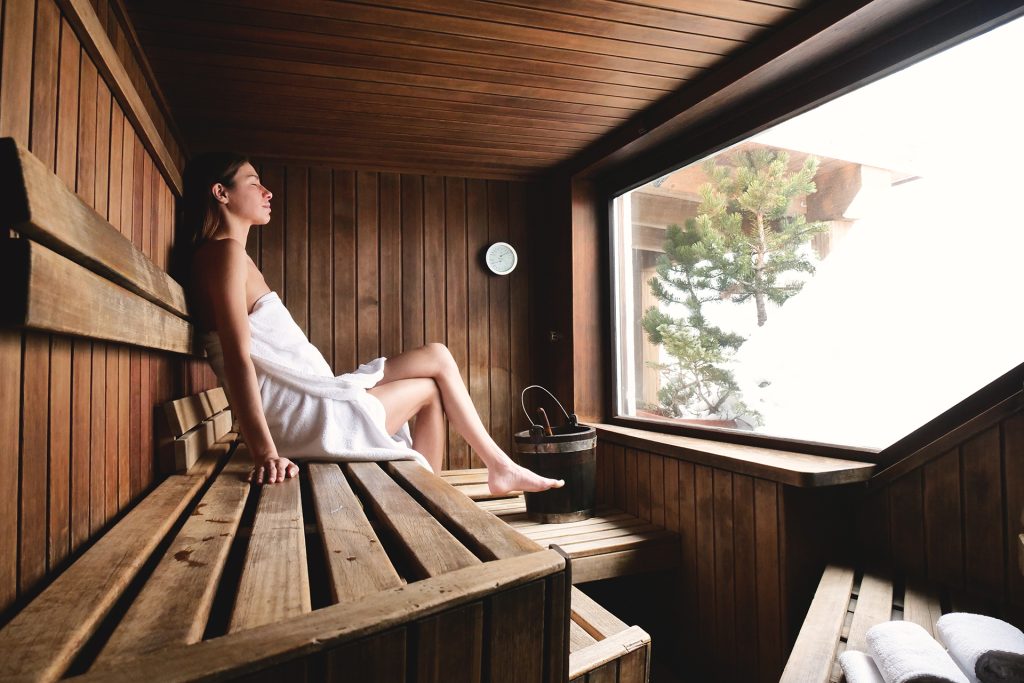
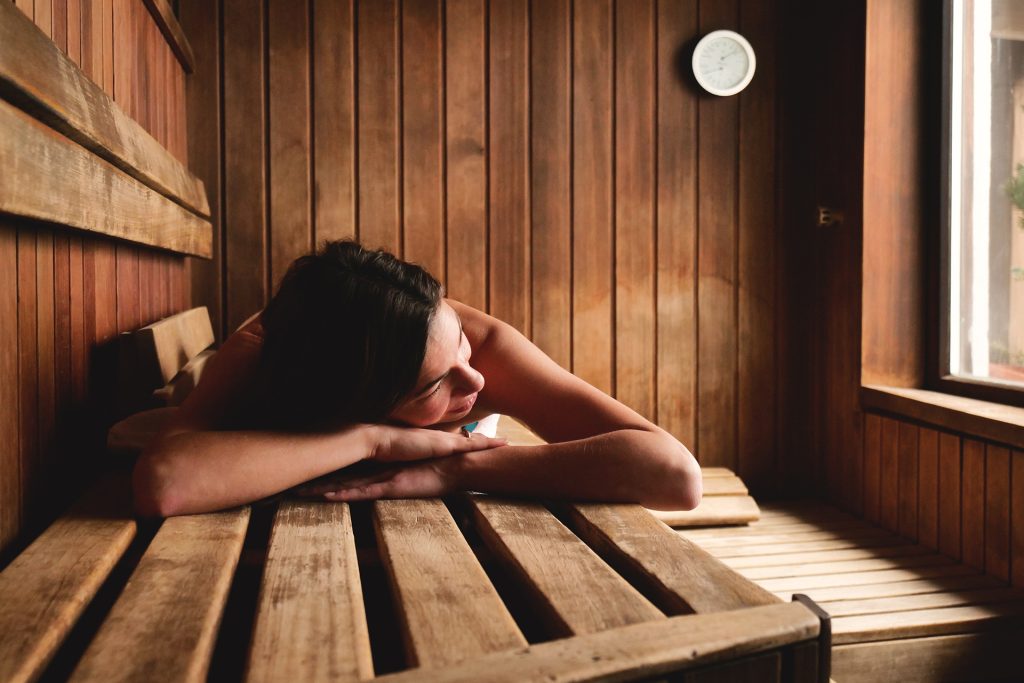
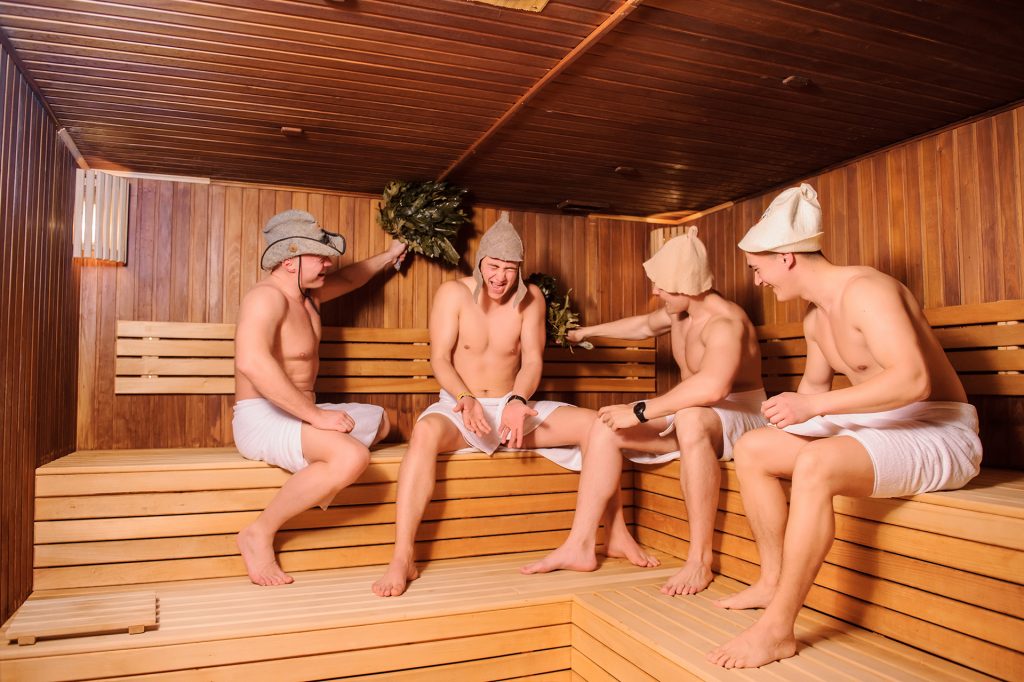
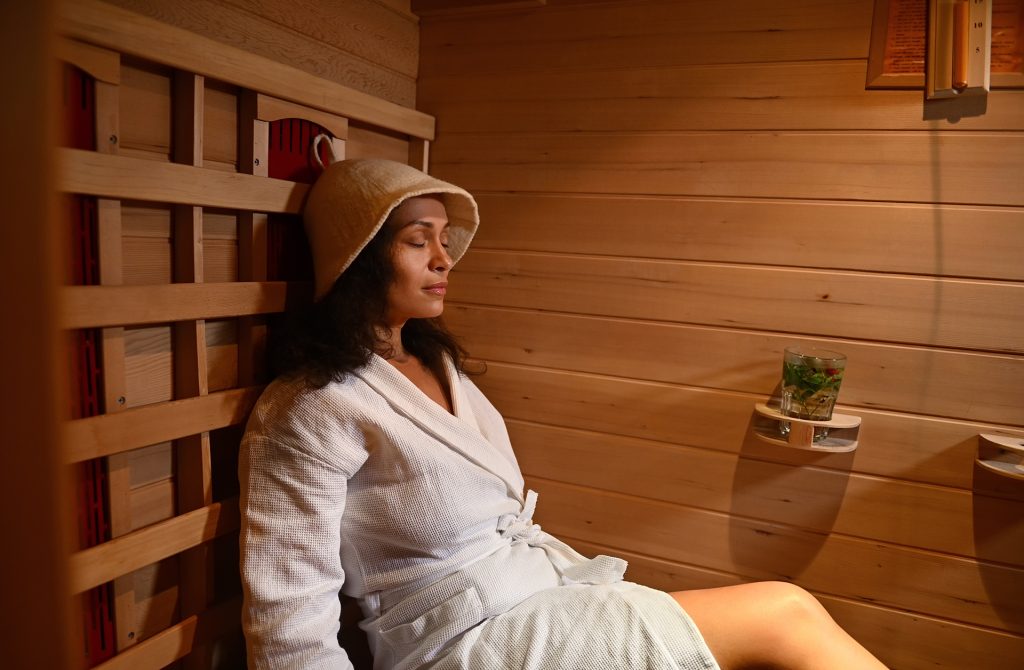
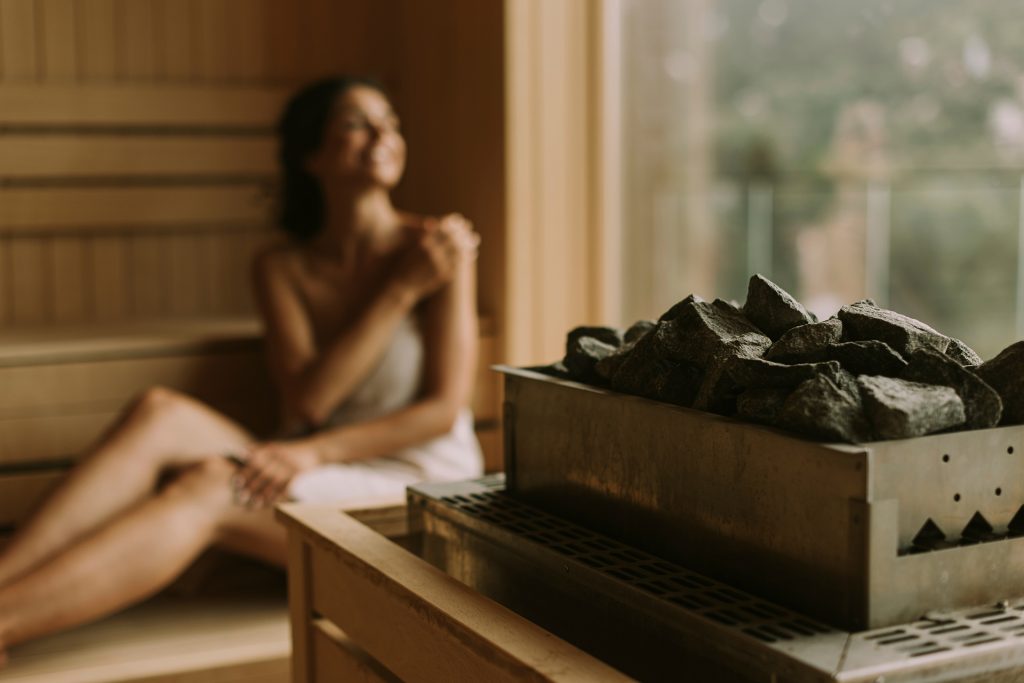


Wonderful Blog! Sharing it with my new to sauna friends! Thanks Sandra!